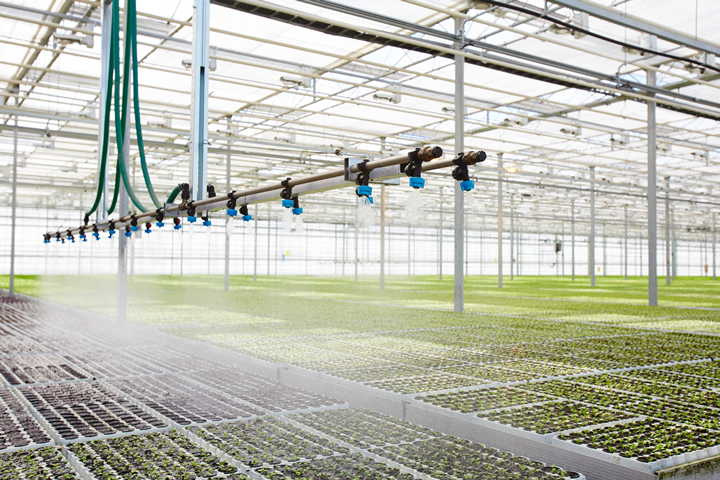Disease in the field: The dilemma of choosing between fast and accurate tests

For growers, a top priority is to ensure their yields are as high as possible. Drought, severe weather, fire — they all reduce yields, but disease is far and away the biggest barrier to achieving a more bountiful harvest. Worldwide, plant diseases and pests account for up to 40% of the yield losses in key crops, such as wheat, rice, corn, soybeans and potatoes.
Fungal diseases make up a huge percentage of those losses, as they are responsible for 20% of annual global non-livestock farming losses, with more than 19,000 identified species that attack crops. Botrytis, alone, whose nearly three dozen variants attack a wide array of high-value fruits and vegetables, causes more than $10 billion of economic damage each year worldwide.
Emerging threats
As worrisome as the diseases we know about already are, there’s an ever-growing risk of new crop pathogens emerging due to genetic mutation, spillover from the wild or migration from another part of the world. Climate change is pushing wild ecosystems and their pathogens into new geographies, deforestation is bringing wild plant pathogens into more frequent contact with domesticated crops, and global trade networks virtually ensure that new diseases won’t remain localized for very long.
There are plenty of historical examples of the economic and human suffering that can occur when a novel disease lays waste to key crops. The Irish Potato Blight killed 1 million people due to starvation from 1845 to 1851. Panama Disease almost destroyed the banana industry in the 1950s when the fungus all but eliminated the Gros Michel cultivar. Its replacement, the Cavendish, is currently under threat from a variant of that same fungus. Sri Lanka is today known for tea because coffee leaf rust ripped through their then thriving coffee plantations in the mid-19th century, forcing growers to switch to another cash crop.
So, how do we fight these pathogens, both known and new, that are holding down yields? Identification is a critical step in controlling an outbreak, and, unfortunately, the diagnostic status quo is falling short.
The problem with the testing status quo
It’s true that, for some crop diseases, symptoms make it immediately apparent which pathogen is the culprit. But in many cases, a test is required to know for sure. For instance, botrytis presents similarly to other common fungal diseases, such as rhizoctonia, and the response differs significantly - treatment for one won’t do anything to remediate an infection caused by the other. Growers can’t guess, because that wastes time and money, in addition to adding unnecessary antifungals to the environment. They benefit from a definitive test to know for sure.
For the most part, however, growers must make a choice they’d rather not have to face: tests that provide fast results or tests that are accurate. Let’s take the standard molecular test that’s used to detect many types of pathogens: polymerase chain reaction, a method we all came to know during the COVID-19 pandemic under its abbreviation, PCR. This method uses a primer that is repeatedly heated and cooled along with the sample to augment genetic material until there’s enough of it to activate a fluorescent dye and show a positive result. It’s extremely accurate, able to detect minute quantities of virus, bacteria or fungi, but because it requires a lab, results are dependent on capacity. At a minimum, it will take a day or two to ship the sample to the lab and receive a result, but if the lab is backed up, results could take a week or two to return. That’s plenty of time for a disease to rip through an entire field and spread to several others. Growers need to identify the disease rapidly so treatment and containment efforts can begin immediately.
Faster tests, such as lateral flow (also known as antigen tests), employ a completely different method. In a lateral flow test, antibodies are fixed in a strip along which the sample will flow. If antigens are present, they react with the antibodies to change the strip’s color and show a positive result. Lateral flow tests can produce results in the field as rapidly as 15 minutes, but they lack the sensitivity of PCR, and produce a significant number of false negative results. Again, growers need quick results, but they also need to be able to trust that they are accurate. Not detecting the presence of a disease gives the pathogen more time to spread and damage crops.
Looking for a solution
The good news for growers is that the diagnostic industry is undergoing a transformation right now that is advancing the underlying technologies to drive innovation. For instance, loop-mediated isothermal amplification (LAMP) is a molecular testing method like PCR, but unlike PCR it does not require thermal cycling and instead holds the temperature at a constant temperature. As a result, innovative diagnostic companies have produced ruggedized, handheld devices that can perform the test in the field to produce accurate results as quickly as 30 minutes. Growers can get results they can trust in a timeframe that enables them to act quickly. Whatever the solution, though, agriculture needs fast, accurate, and easy to use in-the-field tests to help inform exactly what is attacking their crops, take fast action and reduce the yield losses caused by disease.
Shaun Holt is CEO at Alveo Technologies. Prior to Alveo, Shaun served as COO for Atonarp and CFO for Berkeley Lights, Inc., where he led the digital cell biology company through its $205M initial public offering. He brings more than 20 years of experience leading finance, accounting, operations, manufacturing, supply chain, product development processes, and customer success functions across various technology and life sciences companies from start-ups to large-capitalization companies.
Comments (0)
This post does not have any comments. Be the first to leave a comment below.
Featured Product

